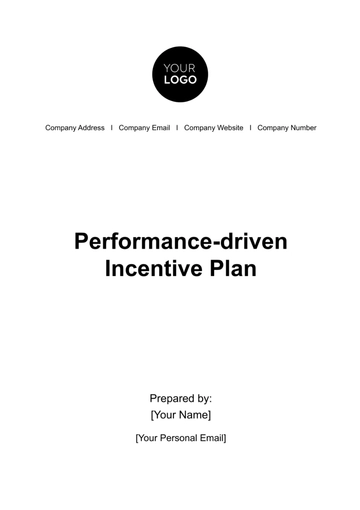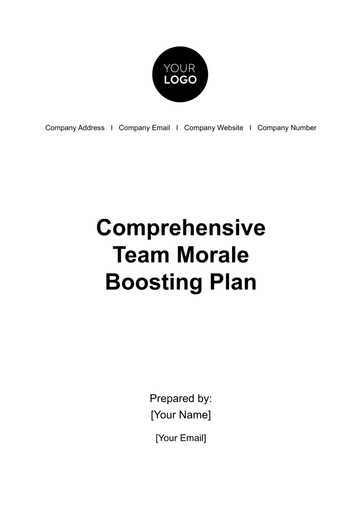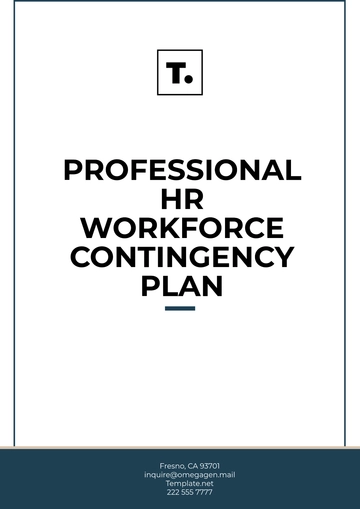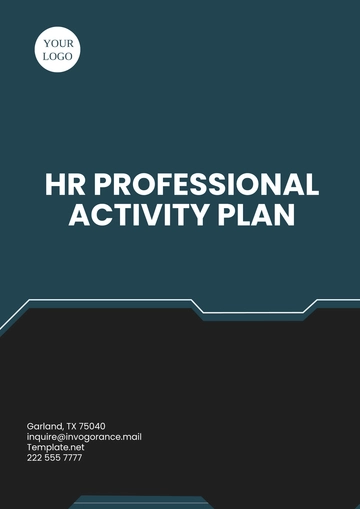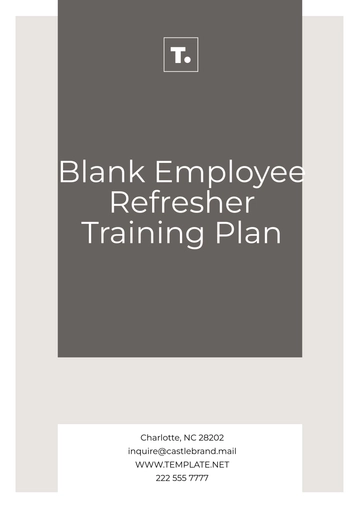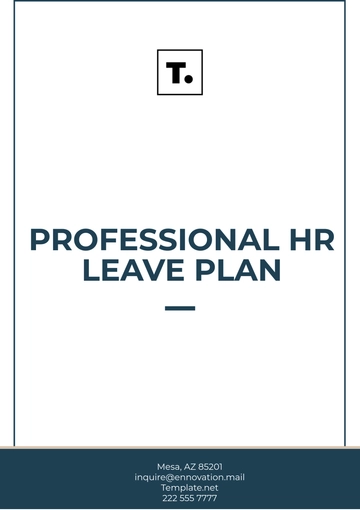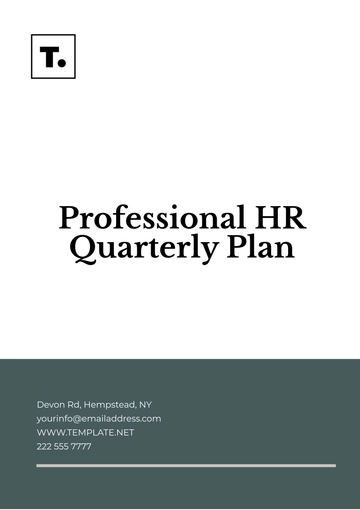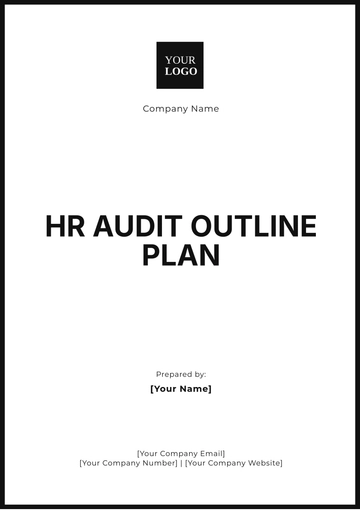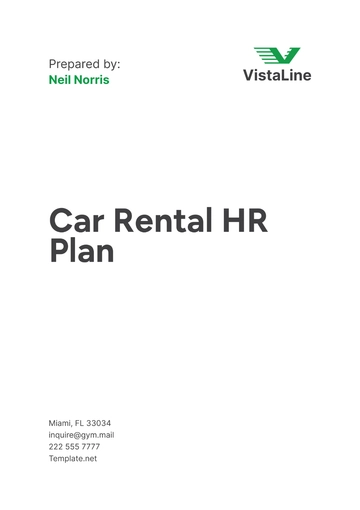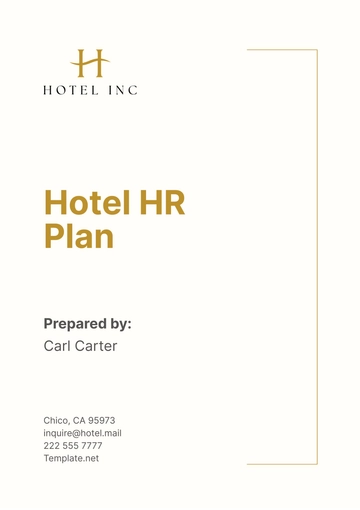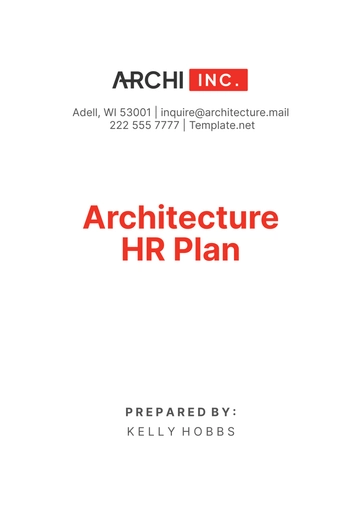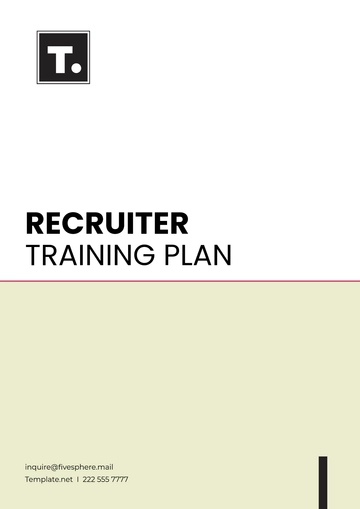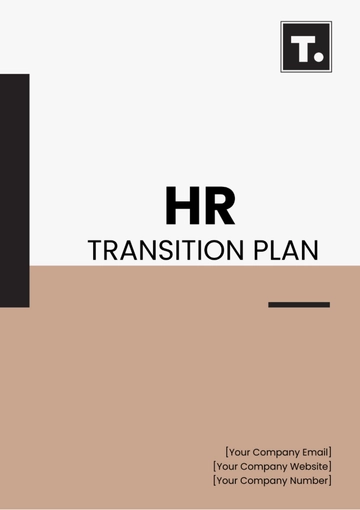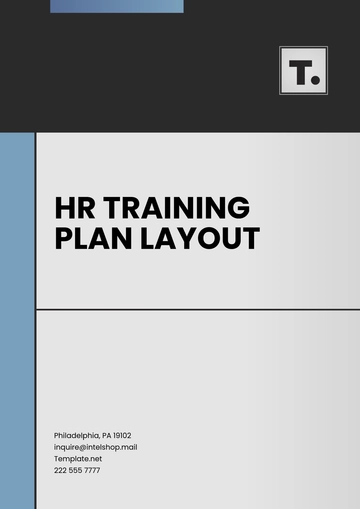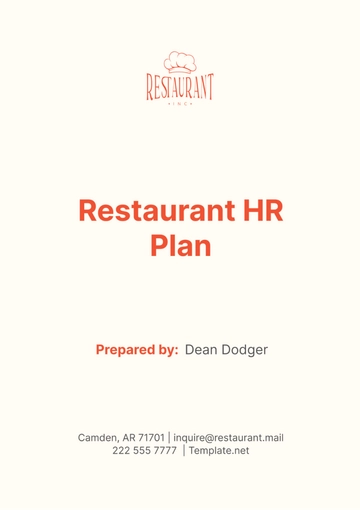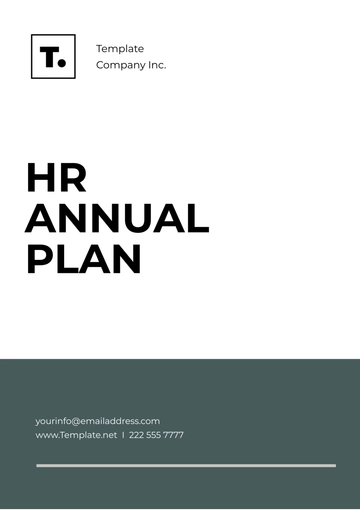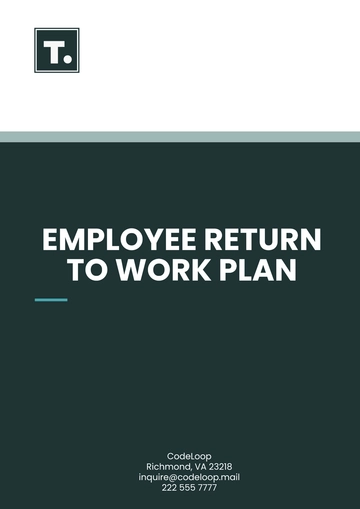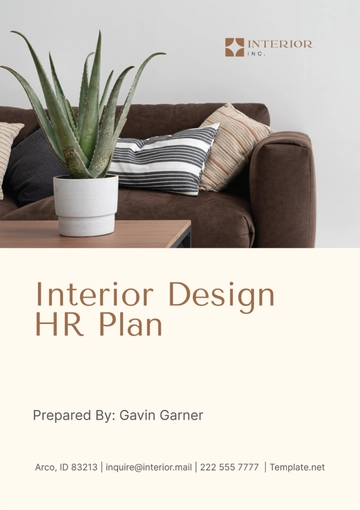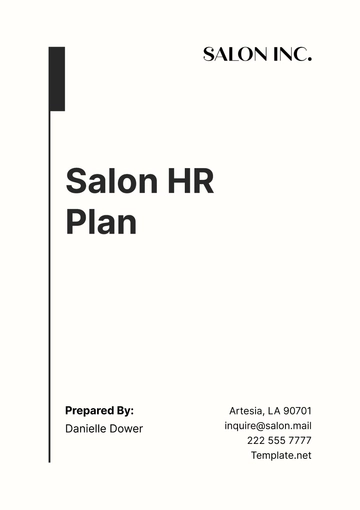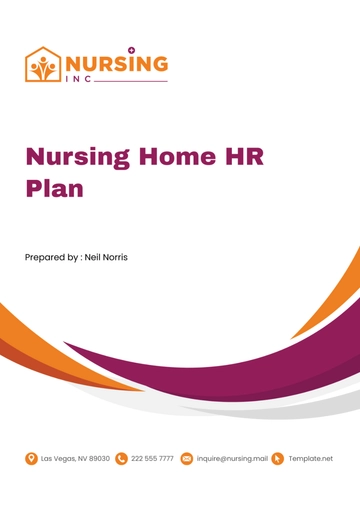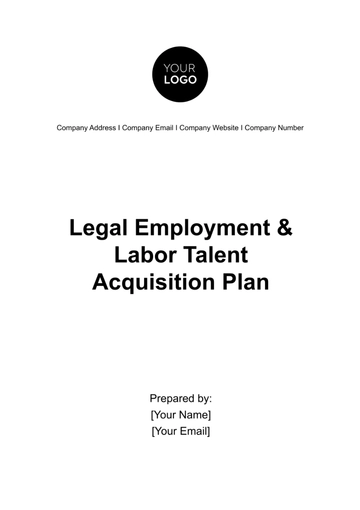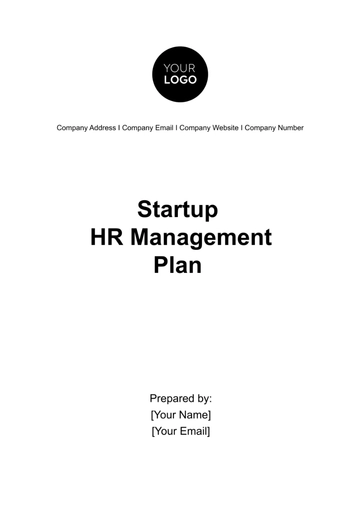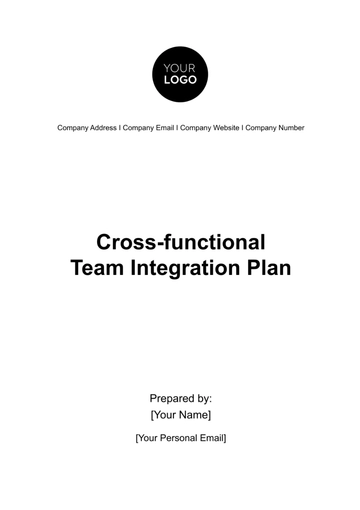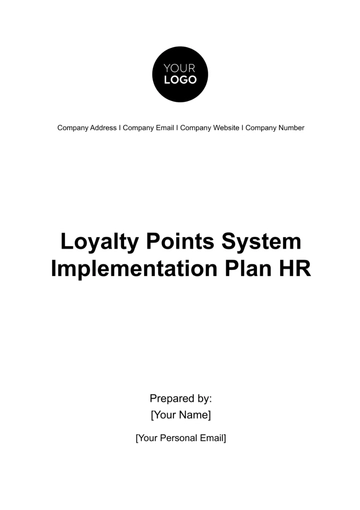Free Salon HR Plan
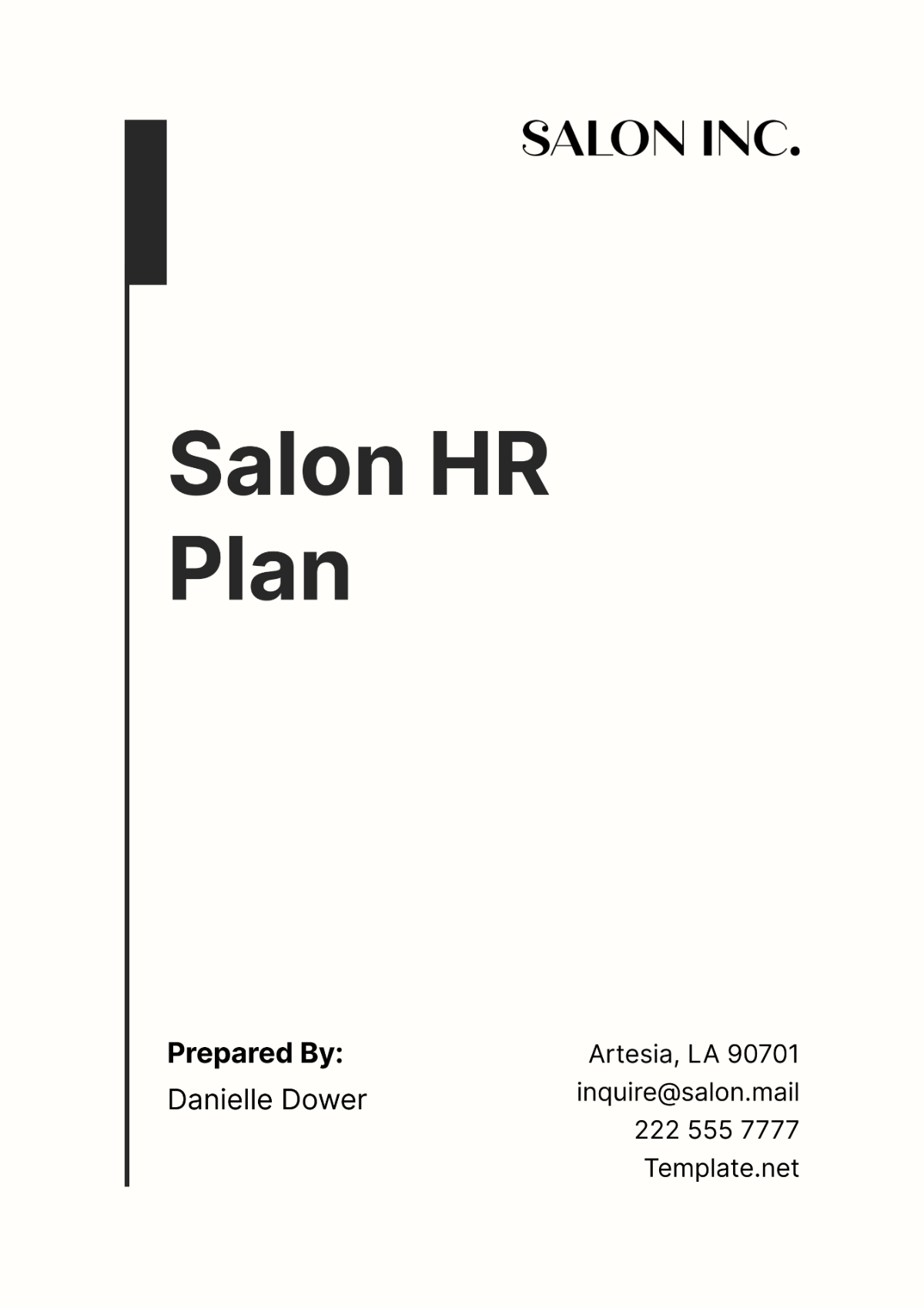
I. Introduction
A. Purpose
The purpose of our HR plan is multifaceted and directly aligns with the strategic objectives of [Your Company Name]. Here are the key purposes:
To Define HR Strategy: The primary purpose of this HR plan is to define the human resources strategy for [Your Company Name]. This strategy will guide our HR activities and ensure they align with our business objectives.
To Align with Business Goals: The HR plan is designed to align with the business goals of [Your Company Name]. It ensures that we have the right talent in place to meet our operational objectives. This alignment is crucial for the success of our salon.
To Enhance Employee Satisfaction: The plan aims to enhance employee satisfaction. By providing a positive work environment, competitive compensation, and opportunities for growth, we aim to make [Your Company Name] a great place to work.
To Improve Service Quality: By attracting and retaining skilled professionals, the HR plan aims to improve the quality of services offered at [Your Company Name]. Our employees are our greatest asset, and their skills and expertise are key to our success.
To Ensure Compliance: The HR plan ensures that [Your Company Name] complies with all relevant labor laws and regulations. This protects our company from potential legal issues and ensures we maintain a fair and ethical workplace.
B. Scope
The scope of our HR plan is comprehensive and applies to all aspects of our human resources management. Here are the key areas it covers:
Applicability: The HR plan applies to all employees of [Your Company Name], including full-time, part-time, and contract workers. It provides a framework for managing all aspects of our human resources.
HR Functions: The HR plan covers all key HR functions. This includes recruitment, training, compensation, and employee relations, ensuring a holistic approach to human resources management.
Compliance: The HR plan ensures compliance with all relevant labor laws and regulations. This is crucial for maintaining a fair and ethical workplace and protecting our company from potential legal issues.
C. Importance
The HR plan is important as the beauty industry is highly competitive. The success of a salon largely depends on the skills and expertise of its staff. A well-defined HR plan helps attract and retain skilled professionals. This ensures high-quality service delivery, which is crucial for customer satisfaction and business success.
Moreover, an effective HR plan promotes a positive work environment. This is crucial for employee satisfaction and retention. The HR plan outlines clear policies for compensation, benefits, and conflict resolution. This ensures that employees feel valued and their grievances are addressed promptly. A satisfied workforce is more productive and committed, which contributes to the overall success of the salon.
Lastly, the HR plan ensures compliance with labor laws and regulations. This protects [Your Company Name] from potential legal issues. It also aligns the workforce strategy with the business goals of the salon. This strategic alignment ensures that our human resources contribute effectively to the achievement of our business objectives.
II. Recruitment and Selection
The recruitment and selection process is a critical aspect of our HR plan. It ensures that we attract and hire the right talent to deliver excellent service to our clients. Here’s an overview of the steps involved in this process:
No. | Step | Description |
|---|---|---|
1 | Job Posting | We will advertise job openings on various platforms. |
2 | Screening and Shortlisting | Candidates will be shortlisted based on their qualifications and experience. |
3 | Interviews | Shortlisted candidates will be interviewed by the HR team and the salon manager. |
4 | Selection | The final selection will be made based on the interview performance and reference checks. |
A. Job Posting
The first step in our recruitment process is job posting. Here are the key aspects of this step:
Platform Selection: We will post job openings on various platforms including online job portals, social media, and our company website. This broad approach ensures that we reach a wide pool of potential candidates.
Job Description: Each job posting will include a detailed job description. This will outline the responsibilities of the role, the skills and qualifications required, and the benefits offered by [Your Company Name].
Branding: Our job postings will also highlight our company culture and values. This helps attract candidates who are a good fit for our salon.
Response Management: We will have a system in place to manage responses to our job postings. This includes acknowledging applications and keeping candidates informed about the status of their application.
Diversity: We are committed to diversity and inclusion. Our job postings will be non-discriminatory and we encourage applications from all qualified candidates.
B. Screening and Shortlisting
After job posting, the next step is screening and shortlisting. Here are the key aspects of this step:
Application Review: We will review all applications to assess the qualifications and experience of the candidates. This helps us identify the candidates who are most likely to succeed in the role.
Shortlisting Criteria: Our shortlisting criteria will be based on the requirements outlined in the job description. This ensures a fair and transparent selection process.
Communication: We will communicate with all shortlisted candidates to inform them about the next steps in the recruitment process. We will also provide feedback to candidates who were not shortlisted.
Documentation: We will maintain documentation of our screening and shortlisting process. This includes the applications received, the shortlisting criteria used, and the reasons for selecting or rejecting candidates.
C. Interviews
The third step in our recruitment process is conducting interviews. Here are the key aspects of this step:
Interview Panel: The interview panel will typically include the HR manager and the salon manager. They will assess the candidate’s skills, experience, and fit with our company culture.
Interview Questions: We will prepare a set of interview questions that are relevant to the role. These questions will help us assess the candidate’s technical skills, problem-solving abilities, and interpersonal skills.
Candidate Experience: We aim to provide a positive experience for all candidates during the interview process. This includes providing clear information about the interview process, being respectful and professional during the interview, and providing feedback after the interview.
Evaluation: After each interview, the interview panel will evaluate the candidate’s performance. This evaluation will form the basis for the final selection decision.
D. Selection
The final step in our recruitment process is selection. Here are the key aspects of this step:
Reference Checks: Before making a job offer, we will conduct reference checks to verify the candidate’s employment history and qualifications.
Job Offer: If the reference checks are satisfactory, we will make a job offer to the candidate. The job offer will include details of the compensation package and other terms and conditions of employment.
Onboarding: Once the candidate accepts the job offer, we will initiate the onboarding process. This includes completing the necessary paperwork and planning the orientation program.
Feedback: We will provide feedback to candidates who were not selected. This feedback will help them understand the areas where they can improve.
Review: After each recruitment cycle, we will review the recruitment process to identify any areas for improvement. This continuous improvement approach helps us enhance the effectiveness of our recruitment process.
It is important to note that by investing in a thorough recruitment and selection process, we reduce the risk of making poor hiring decisions. Hiring the wrong person can be costly and disruptive for our salon. It can lead to lower service quality, decreased employee morale, and increased turnover. Therefore, it’s essential that we take the time to find the right person for each role.
Finally, our recruitment and selection process reflects our commitment to diversity and inclusion. We believe that a diverse workforce brings a range of perspectives and ideas, which can lead to more innovative and effective solutions. By promoting diversity and inclusion in our recruitment practices, we contribute to a more equitable and inclusive beauty industry.
III. Training and Development
A. Orientation
The orientation process is the first step in our training and development plan. Here are the key aspects of this step:
Welcome Session: The orientation process begins with a welcome session. This session introduces new employees to [Your Company Name] and provides an overview of our salon’s history, mission, values, and culture.
Salon Tour: New employees will be given a tour of the salon. This helps them familiarize themselves with the layout of the salon and the location of important facilities such as the break room, restrooms, and supply closets.
Introduction to Team Members: New employees will be introduced to their team members and other staff at the salon. This helps build relationships and promotes a sense of belonging.
Overview of Job Role: Each new employee will receive a detailed overview of their job role, including their responsibilities, the tools and equipment they will be using, and the standards they are expected to meet.
Policies and Procedures: New employees will be briefed on the salon’s policies and procedures. This includes our code of conduct, health and safety procedures, customer service standards, and procedures for handling cash and processing payments.
B. Skill Development
Skill development is a continuous process at [Your Company Name]. Here are the key aspects of this step:
Technical Training: We provide technical training to help our employees enhance their skills. This includes training on the latest hair styling techniques, skincare treatments, and nail art designs.
Product Knowledge: Our employees receive training on the products we use and sell at our salon. This helps them make appropriate product recommendations to our clients and answer any questions they may have about these products.
Customer Service Training: We place a strong emphasis on customer service. Our employees receive training on how to provide excellent service, handle customer complaints, and build strong relationships with our clients.
Health and Safety Training: Our employees are trained on health and safety procedures. This includes training on how to maintain a clean and safe salon environment, how to use equipment safely, and how to handle any emergencies that may arise.
C. Performance Evaluation
Performance evaluation is a crucial part of our training and development plan. It helps us assess the performance of our employees, identify their strengths and areas for improvement, and make informed decisions about promotions, rewards, and training needs. The following table outlines the key performance evaluation metrics we use at [Your Company Name]:
Metric | Description | Weightage |
|---|---|---|
1. Technical Skills | This assesses the employee’s ability to perform their job tasks effectively. | 30% |
2. Customer Service | This measures the employee’s ability to provide excellent service to our clients. | 30% |
3. Teamwork | This evaluates the employee’s ability to work effectively with their colleagues. | 20% |
4. Compliance | This assesses the employee’s adherence to our salon’s policies and procedures. | 10% |
5. Initiative | This measures the employee’s willingness to take on new tasks and challenges. | 10% |
Total | 100% |
Performance evaluations are a key tool for managing the performance of our employees. They provide a structured and fair way to assess each employee’s performance and identify areas for improvement. This helps us ensure that our employees are performing at their best and contributing to the success of [Your Company Name].
Moreover, performance evaluations provide valuable feedback to our employees. They help our employees understand what they are doing well and where they need to improve. This feedback is crucial for their professional development and career growth.
IV. Compensation and Benefits
A. Salary Structure
The salary structure is a critical component of our compensation plan at [Your Company Name]. It ensures that our employees are compensated fairly for their skills and contributions. The following table provides an overview of the salary structure for key roles at our salon:
Role | Salary |
|---|---|
Salon Manager | $50,000 per year |
Senior Hair Stylist | $40,000 per year |
Junior Hair Stylist | $30,000 per year |
Esthetician | $35,000 per year |
Receptionist | $25,000 per year |
Salon Manager: The Salon Manager is responsible for overseeing the operations of the salon, including staff management, inventory control, and customer service. The salary reflects the level of responsibility and the skills and experience required for this role.
Senior Hair Stylist: The Senior Hair Stylist is an experienced professional who provides a range of hair services to our clients. The salary reflects their level of expertise and the value they bring to our salon.
Junior Hair Stylist: The Junior Hair Stylist is a less experienced stylist who is still developing their skills. Their salary is lower than that of the Senior Hair Stylist, reflecting their level of experience.
Esthetician: The Esthetician provides skincare services to our clients. Their salary reflects the specialized skills required for this role.
Receptionist: The Receptionist is responsible for greeting clients, scheduling appointments, and managing the front desk. Their salary reflects the importance of their role in providing excellent customer service and ensuring the smooth operation of our salon.
In summary, a well-defined salary structure is crucial for attracting and retaining skilled professionals in the beauty industry. It ensures that our employees are compensated fairly for their skills and contributions, which boosts their job satisfaction and loyalty to [Your Company Name].
Additionally, a clear and transparent salary structure helps manage our employees’ expectations and reduces the likelihood of pay-related disputes. It ensures that our employees understand how their pay is determined and what they can do to earn more.
B. Incentives and Bonuses
Incentives and bonuses form a key part of our compensation plan at [Your Company Name]. They are designed to motivate our employees and reward them for their hard work and achievements. The following table provides an overview of the incentives and bonuses we offer:
Incentive/Bonus | Details |
|---|---|
Performance Bonus | A bonus of up to 10% of the employee’s annual salary is awarded to employees who exceed their performance targets. |
Customer Satisfaction Bonus | A bonus of $500 is awarded to employees who receive excellent feedback from our clients. |
Referral Bonus | A bonus of $1,000 is awarded to employees who refer a candidate who is hired by our salon. |
Longevity Bonus | A bonus of $200 is awarded to employees on their work anniversaries to recognize their loyalty and commitment to our salon. |
Performance Bonus: The performance bonus is designed to motivate employees to exceed their performance targets. By linking the bonus to the employee’s annual salary, we ensure that the bonus is proportionate to the employee’s level of responsibility and contribution to our salon.
Customer Satisfaction Bonus: The customer satisfaction bonus rewards employees for providing excellent service to our clients. This bonus not only motivates employees to strive for excellence in their work but also helps us build strong relationships with our clients.
Referral Bonus: The referral bonus encourages employees to refer qualified candidates to our salon. This not only helps us attract talented professionals but also ensures that our employees are invested in the success of our salon.
Longevity Bonus: The longevity bonus recognizes the loyalty and commitment of our employees. By rewarding employees on their work anniversaries, we show our appreciation for their contributions to our salon and encourage them to stay with us for the long term.
Incentives and bonuses play a crucial role in motivating and retaining employees. They provide a tangible reward for hard work and achievement, boosting employee morale and job satisfaction. By offering competitive incentives and bonuses, we can attract and retain the best talent in the beauty industry, ensuring the success of [Your Company Name].
Furthermore, incentives and bonuses align the interests of our employees with the goals of our salon. They encourage employees to strive for excellence in their work, leading to higher service quality and customer satisfaction. By linking incentives and bonuses to key performance indicators, we ensure that our employees are focused on the things that matter most to our salon.
C. Benefits
Benefits are a key part of our compensation plan at [Your Company Name]. They not only enhance the overall compensation package but also contribute to the well-being and satisfaction of our employees. The following table provides an overview of the benefits we offer:
Benefit | Details |
|---|---|
Health Insurance | We offer comprehensive health insurance coverage, including medical, dental, and vision care. |
Paid Time Off | Our employees are entitled to paid time off, including vacation days, sick leave, and personal days. |
Retirement Plan | We offer a 401(k) retirement plan with a company match to help our employees save for their future. |
Employee Discount | Our employees enjoy a 20% discount on our salon services and products at all times, and a special 30% discount during their birthday month. |
Professional Development | We provide opportunities for professional development, including training programs and educational assistance. |
Health Insurance: Offering comprehensive health insurance coverage is a key benefit in the U.S. context. It ensures that our employees have access to medical care when they need it, which contributes to their overall well-being and job satisfaction.
Paid Time Off: Paid time off allows our employees to rest and recharge, leading to increased productivity and job satisfaction. It also shows our respect for our employees’ personal time and life outside of work.
Retirement Plan: A 401(k) retirement plan with a company match is a valuable benefit that helps our employees save for their future. It encourages financial planning and provides a sense of security for our employees.
Employee Discount: Our employees enjoy a 20% discount on our salon services and products at all times, and a special 30% discount during their birthday month. This not only helps our employees save money but also encourages them to try different services and products, which can enhance their skills and knowledge.
Professional Development: We believe in the continuous learning and development of our employees. We provide opportunities for professional development, including training programs and educational assistance. This helps our employees enhance their skills and stay updated with the latest trends in the beauty industry.
Benefits play a crucial role in attracting and retaining employees. By offering a comprehensive benefits package, we can attract and retain the best talent in the beauty industry, ensuring the success of [Your Company Name].
In addition to that, benefits like paid time off, employee discounts, and professional development opportunities contribute to a positive work environment. They show our employees that we value their hard work and commitment, boosting their morale and job satisfaction.
V. Employee Relations
Employee relations is a key aspect of our HR plan at [Your Company Name]. It ensures that we maintain a positive work environment and strong relationships with our employees. Here are the key aspects of our employee relations strategy:
A. Conflict Resolution
Conflict resolution is crucial for maintaining a harmonious work environment. Here are the key steps in our conflict resolution process:
Conflict Identification: The first step in conflict resolution is identifying the existence of a conflict. This involves:
1.1. Behavioral Changes: Changes in an employee’s behavior, such as increased absenteeism, decreased productivity, or changes in attitude, can indicate a conflict.
1.2. Performance Changes: A sudden drop in an employee’s performance or a failure to meet performance targets can also be a sign of conflict.
Understanding the Conflict: Once a conflict is identified, it’s important to understand the nature of the conflict and the parties involved. This involves:
2.1. Listening to All Parties: It’s important to give all parties involved in the conflict a chance to express their views and feelings. This helps to ensure that everyone feels heard and understood.
2.2. Identifying Underlying Issues: Often, conflicts are caused by underlying issues, such as miscommunication, differing expectations, or personal disagreements. Identifying these issues can help in resolving the conflict.
Facilitating Communication: Open and respectful communication is key to resolving conflicts. This involves:
3.1. Facilitating Dialogue: This involves creating a safe and respectful space for the parties to discuss the conflict and express their feelings and concerns.
3.2. Ensuring Understanding: It’s important to ensure that all parties understand each other’s perspectives. This can involve asking clarifying questions, summarizing what has been said, or asking for confirmation of understanding.
Problem Solving: After the issues have been clearly identified and understood, the parties are encouraged to find a mutually acceptable solution. This may involve:
4.1. Encouraging Compromise: Compromise involves each party giving up something in order to reach a solution. This can be an effective way to resolve conflicts where the parties have differing goals or desires.
4.2. Seeking Help from a Neutral Third Party: In some cases, it may be helpful to involve a neutral third party, such as a mediator, to help resolve the conflict.
Follow-up: The final step in the conflict resolution process is to monitor the situation to ensure that the conflict has been resolved effectively. This involves:
5.1. Checking In: This involves regularly checking in with the parties to see how they are doing and whether the conflict has been resolved.
5.2. Addressing Further Issues: If further issues arise, it’s important to address them promptly to prevent the conflict from escalating.
B. Employee Engagement
Employee engagement is crucial for the success of [Your Company Name]. Here are the key strategies we use to boost employee engagement:
Recognition and Rewards: Recognizing and rewarding employees for their hard work and achievements is a powerful way to boost engagement. This could involve:
1.1. Verbal Praise: Simple words of appreciation can have a big impact on employee morale and engagement. This could involve praising an employee for a job well done, acknowledging their hard work, or thanking them for their contribution.
1.2. Awards: Awards can be a powerful way to recognize and reward exceptional performance. This could involve an “Employee of the Month” award, a “Best Customer Service” award, or other types of recognition.
Communication: Regular and open communication helps keep employees informed and engaged. This could involve:
2.1. Team Meetings: Regular team meetings provide an opportunity for employees to share updates, discuss issues, and collaborate on solutions. This can help to build a sense of team spirit and engagement.
2.2. Updates from Management: Regular updates from management can help to keep employees informed about company news, changes, and future plans. This can help to create a sense of transparency and trust, which can boost employee engagement.
Team Building Activities: Regular team building activities can help strengthen relationships among employees, boost morale, and improve collaboration. This could involve:
3.1. Team Outings: Team outings, such as a team lunch or a day out, can be a fun way to build relationships and boost morale. This can help to create a positive and engaging work environment.
3.2. Team-Building Exercises: Team-building exercises, such as problem-solving activities or collaborative projects, can help to improve teamwork and collaboration. This can boost employee engagement and productivity.
C. Grievance Handling
A proper grievance handling mechanism is crucial for maintaining a positive work environment. Here are the key steps in our grievance handling process:
Grievance Identification: The first step in grievance handling is identifying the grievance. This involves:
1.1. Creating a Safe Environment: It’s important to create an environment where employees feel safe to express their concerns without fear of retaliation. This involves treating all grievances seriously and maintaining confidentiality.
1.2. Open Communication: Encouraging open communication can help to ensure that grievances are raised and addressed promptly. This involves being approachable, listening to employees, and encouraging them to share their concerns.
Understanding the Grievance: Once a grievance is raised, it’s important to understand the nature of the grievance and the parties involved. This involves:
2.1. Listening to the Employee: When an employee raises a grievance, it’s important to listen to them carefully and empathetically. This helps to ensure that the employee feels heard and understood.
2.2. Asking Clarifying Questions: Asking clarifying questions can help to ensure that you fully understand the grievance. This can involve asking the employee to provide more details, explain their feelings, or describe what outcome they are hoping for.
Investigation: If necessary, an investigation may be conducted to gather more information about the grievance. This could involve:
3.1. Interviewing Other Employees: If the grievance involves other employees, it may be necessary to interview them to get their perspective. This should be done in a fair and respectful manner, ensuring that all parties have a chance to share their side of the story.
3.2. Reviewing Relevant Documents: Reviewing relevant documents, such as employment contracts, company policies, or email correspondence, can provide valuable information for the investigation.
Resolution: After the grievance has been fully understood and investigated, a resolution should be sought. This could involve:
4.1. Mediation: Mediation involves facilitating a discussion between the parties involved in the grievance to help them find a mutually acceptable solution. This should be done in a neutral and respectful manner, ensuring that all parties feel heard and understood.
4.2. Changes to Workplace Practices: If the grievance is related to workplace practices, it may be necessary to make changes to these practices. This could involve changing work schedules, modifying job roles, or updating company policies.
Follow-up: The final step in the grievance handling process is to follow up with the employee to ensure that the grievance has been effectively resolved. This involves:
5.1. Checking In: Checking in with the employee involves asking them how they are doing and whether the resolution has addressed their grievance. This helps to ensure that the resolution has been effective and that the employee feels satisfied with the outcome.
5.2. Addressing Further Issues: If further issues arise, it’s important to address them promptly. This helps to prevent the grievance from escalating and ensures that the employee feels heard and valued.
VI. Conclusion
In conclusion, the HR plan for [Your Company Name] is designed to ensure that we have the right workforce in place to meet our operational goals and objectives. It covers all key aspects of human resources management, including recruitment and selection, training and development, compensation and benefits, and employee relations. Each of these areas plays a crucial role in attracting, developing, and retaining the talent we need to provide excellent service to our clients.
Moreover, our HR plan reflects our commitment to creating a positive and inclusive work environment. We believe that our employees are our greatest asset, and we are committed to investing in their growth and development. By offering competitive compensation, comprehensive benefits, and opportunities for professional development, we aim to make [Your Company Name] a great place to work. We believe that this not only benefits our employees but also contributes to the overall success of our salon. After all, a happy and engaged workforce is key to delivering high-quality service and ensuring customer satisfaction. We look forward to implementing this HR plan and seeing the positive impact it will have on our salon.
- 100% Customizable, free editor
- Access 1 Million+ Templates, photo’s & graphics
- Download or share as a template
- Click and replace photos, graphics, text, backgrounds
- Resize, crop, AI write & more
- Access advanced editor
Develop strategic HR initiatives easily with our Salon HR Plan Template from Template.net! This editable resource offers a structured framework for outlining human resources goals and strategies. With its customizable format and AI Editor Tool, you can personalize the template to address key HR areas such as recruitment and training!
You may also like
- Finance Plan
- Construction Plan
- Sales Plan
- Development Plan
- Career Plan
- Budget Plan
- HR Plan
- Education Plan
- Transition Plan
- Work Plan
- Training Plan
- Communication Plan
- Operation Plan
- Health And Safety Plan
- Strategy Plan
- Professional Development Plan
- Advertising Plan
- Risk Management Plan
- Restaurant Plan
- School Plan
- Nursing Home Patient Care Plan
- Nursing Care Plan
- Plan Event
- Startup Plan
- Social Media Plan
- Staffing Plan
- Annual Plan
- Content Plan
- Payment Plan
- Implementation Plan
- Hotel Plan
- Workout Plan
- Accounting Plan
- Campaign Plan
- Essay Plan
- 30 60 90 Day Plan
- Research Plan
- Recruitment Plan
- 90 Day Plan
- Quarterly Plan
- Emergency Plan
- 5 Year Plan
- Gym Plan
- Personal Plan
- IT and Software Plan
- Treatment Plan
- Real Estate Plan
- Law Firm Plan
- Healthcare Plan
- Improvement Plan
- Media Plan
- 5 Year Business Plan
- Learning Plan
- Marketing Campaign Plan
- Travel Agency Plan
- Cleaning Services Plan
- Interior Design Plan
- Performance Plan
- PR Plan
- Birth Plan
- Life Plan
- SEO Plan
- Disaster Recovery Plan
- Continuity Plan
- Launch Plan
- Legal Plan
- Behavior Plan
- Performance Improvement Plan
- Salon Plan
- Security Plan
- Security Management Plan
- Employee Development Plan
- Quality Plan
- Service Improvement Plan
- Growth Plan
- Incident Response Plan
- Basketball Plan
- Emergency Action Plan
- Product Launch Plan
- Spa Plan
- Employee Training Plan
- Data Analysis Plan
- Employee Action Plan
- Territory Plan
- Audit Plan
- Classroom Plan
- Activity Plan
- Parenting Plan
- Care Plan
- Project Execution Plan
- Exercise Plan
- Internship Plan
- Software Development Plan
- Continuous Improvement Plan
- Leave Plan
- 90 Day Sales Plan
- Advertising Agency Plan
- Employee Transition Plan
- Smart Action Plan
- Workplace Safety Plan
- Behavior Change Plan
- Contingency Plan
- Continuity of Operations Plan
- Health Plan
- Quality Control Plan
- Self Plan
- Sports Development Plan
- Change Management Plan
- Ecommerce Plan
- Personal Financial Plan
- Process Improvement Plan
- 30-60-90 Day Sales Plan
- Crisis Management Plan
- Engagement Plan
- Execution Plan
- Pandemic Plan
- Quality Assurance Plan
- Service Continuity Plan
- Agile Project Plan
- Fundraising Plan
- Job Transition Plan
- Asset Maintenance Plan
- Maintenance Plan
- Software Test Plan
- Staff Training and Development Plan
- 3 Year Plan
- Brand Activation Plan
- Release Plan
- Resource Plan
- Risk Mitigation Plan
- Teacher Plan
- 30 60 90 Day Plan for New Manager
- Food Safety Plan
- Food Truck Plan
- Hiring Plan
- Quality Management Plan
- Wellness Plan
- Behavior Intervention Plan
- Bonus Plan
- Investment Plan
- Maternity Leave Plan
- Pandemic Response Plan
- Succession Planning
- Coaching Plan
- Configuration Management Plan
- Remote Work Plan
- Self Care Plan
- Teaching Plan
- 100-Day Plan
- HACCP Plan
- Student Plan
- Sustainability Plan
- 30 60 90 Day Plan for Interview
- Access Plan
- Site Specific Safety Plan
